Beatrix Potter books are having some of a renaissance at our house. In the UK, it’s almost impossible to escape Peter Rabbit themed merchandise and I’m sure that has in turn lead us to rediscover the series.
Having now lived in three different countries, I am always fascinated by how different authors or series make their mark. In Australia we immersed ourselves in books written by Mem Fox and Alison Lester - authors i’d never heard of it in the UK. Here, Julia Donaldson tends to dominate the picture book market, but Beatrix Potter remains as relevant as ever.
But with the current AI trend for Beatrix Potter style art going viral, I thought it was time to revisit the brilliance of Beatrix Potter.
Why I’m a Beatrix Potter Fan
Recently, I’ve spent many hours finding out more about Beatrix Potter the author for an upcoming project that i’ll share here soon. After reading biographies and watching documentaries, I was full of admiration for a woman who was well ahead of her time. I found her tenacious spirit and entrepreneurial attitude inspirational. It made me think of the barriers I often put in my own way and whether I should be approaching life a little bit differently.
One of the reasons I dislike the current AI trend is because it takes away from Beatrix Potter’s dedication to the study of animals. In addition to her literary talents, Beatrix can also be described as a scientist, preservationist, entrepreneur and farmer. So to reduce her work to a quick (and often inaccurate) AI rendering feels wrong.
Educated at home, Beatrix spent her time observing and illustrating the animals she kept as pets. By her early twenties, frequent visits to the The Natural History Museum honed her skills further and she dedicated herself to drawing the plants and animals she studied under the microscope. In 1897, her paper on mycology, ‘On the Germination of the Spores of Agaricineae,’ was presented to a meeting of the Linnean Society - albeit by a Kew Gardens mycologist as women were not allowed to attend.
It’s fair to say that, despite being born into a life of privilege, Beatrix faced many struggles and her path to success wasn’t clear cut. In fact, she was so fed up after receiving countless rejection letters from publishers that she decided to self-publish - something I had always believed to be a recent phenomenon. In 1901 she printed and sold 250 copies of Peter Rabbit before her agreement with Frederick Warne & Co.
And if you’ve ever wondered if Beatrix Potter would be rolling her eyes at all of the Peter Rabbit & Friends merchandise, you would in fact be wrong. Potter was something of a pioneer when it came to licensing her characters. She first patented Peter Rabbit in 1903, followed by board games, figurines, tea sets and puzzles, amongst other things.
After the tragedy of losing her fiance, Norman Warne, in 1905, Beatrix moved to the Lake District where she became heavily involved in the conservation of the local area. She was close friends with Canon Hardwicke Drummond Rawnsley, one of the original founders of the National Trust. Her farm, Hill Top House and other properties were bequeathed to the National Trust upon her death. Today the farm is visited by over 10,000 tourists every year.
Why we love to read Peter Rabbit & Friends
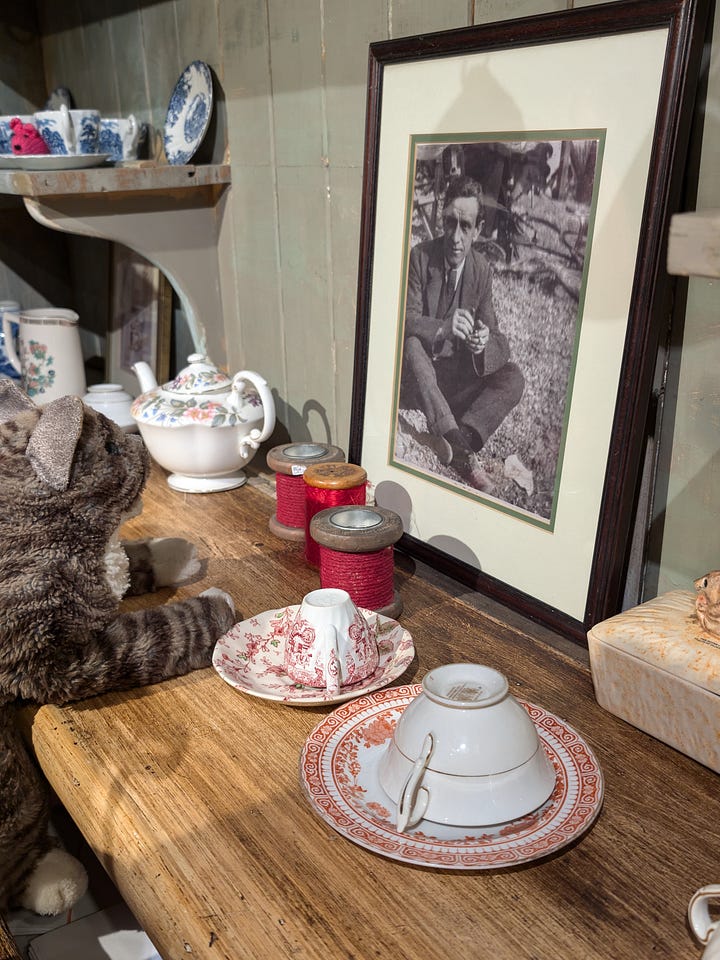
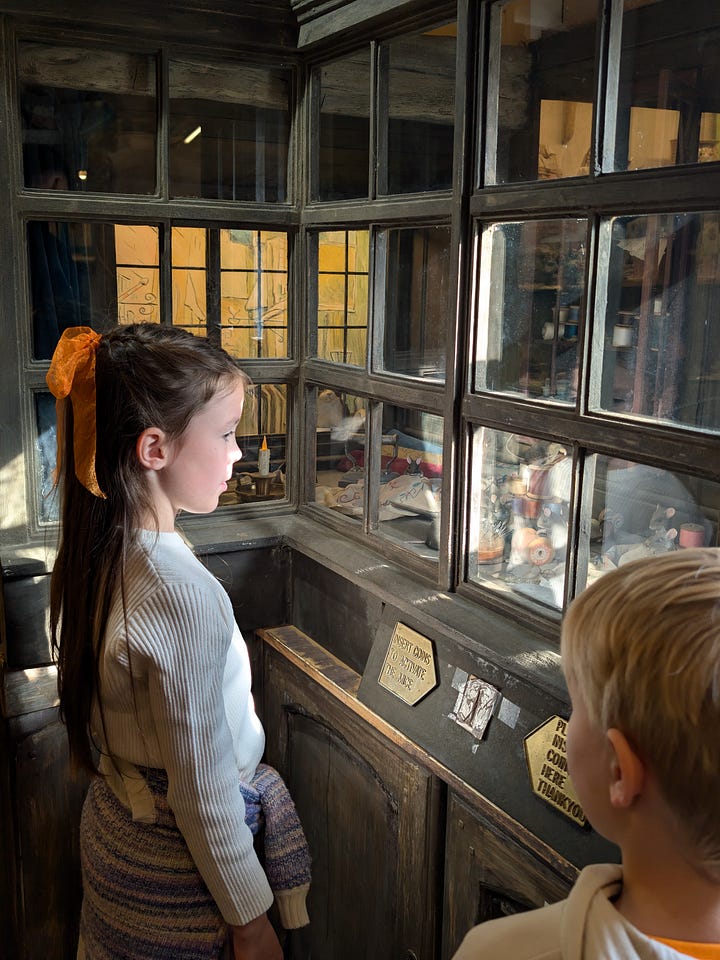
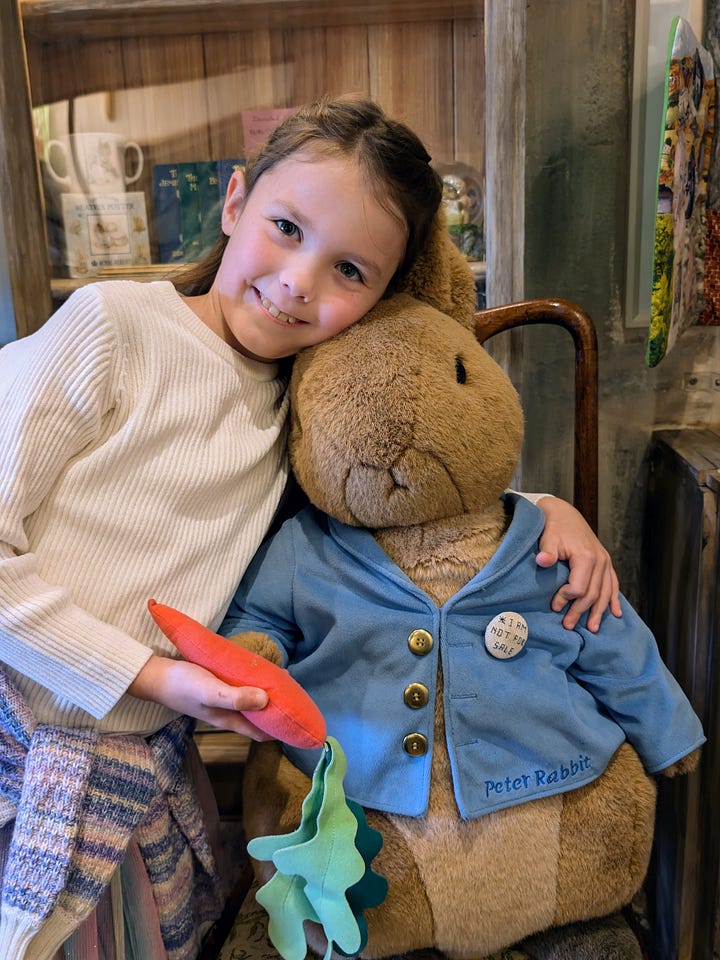
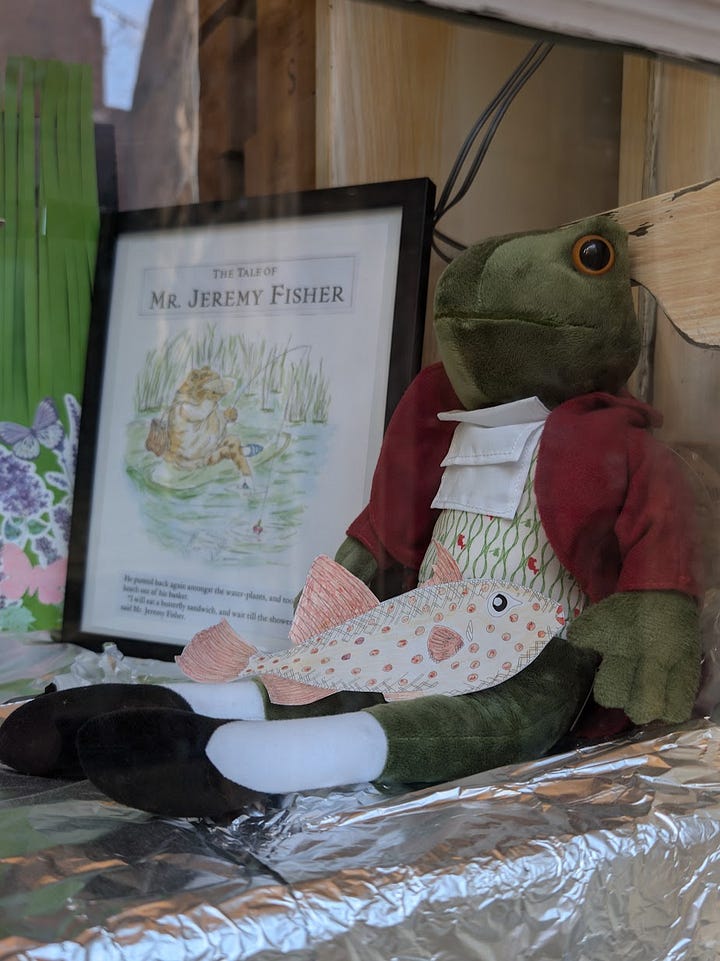
An Immersive World
Because Beatrix Potter was a naturalist, her books, with their detailed illustrations, often form part of our nature studies. We now live in the English countryside and it’s quite easy to immerse ourselves in a world very similar to that of Peter Rabbit and his many famous friends.
When wandering through the local community allotments, it’s not too hard to imagine Mr McGregor chasing Peter.
Fox dens and badgers setts in the nearby fields make us wonder whether Mr Tod and Tommy Brock are lurking near.
And of course, the UK isn’t without it’s Beatrix Potter attractions. Whilst we haven’t made it to Hill Top yet, we did visit The House of the Tailor of Gloucester recently.
The museum was the house Beatrix Potter chose to draw whilst visiting Gloucester and it later inspired the story, The Tailor of Gloucester.
Short Stories for Afternoon Teatime
My two youngest children attend the local primary school, but that doesn’t mean that we can’t participate in afternoon tea reading sessions. Along with poetry, Beatrix Potter’s short stories are an ideal read.
In fact, I don’t understand why Beatrix Potter books are gifted to babies and donated to charity a few years later! Many parents mistakenly purge picture books when their children reach primary school, however I genuinely believe Peter Rabbit is one for keeps.
Whilst short, the vocabulary is rich. Indeed, one of the reasons we focus on children’s classics is because of the language. Recently, we found ourselves looking up the definition of ‘soporific’ after reading the word in The Tale of the Flopsy Bunnies.
And although some of the stories are quite questionable by modern standards, they also provide rich discussion points.
Share your thoughts
Do you love Beatrix Potter stories? What’s your favourite story? I’d love to read your views!



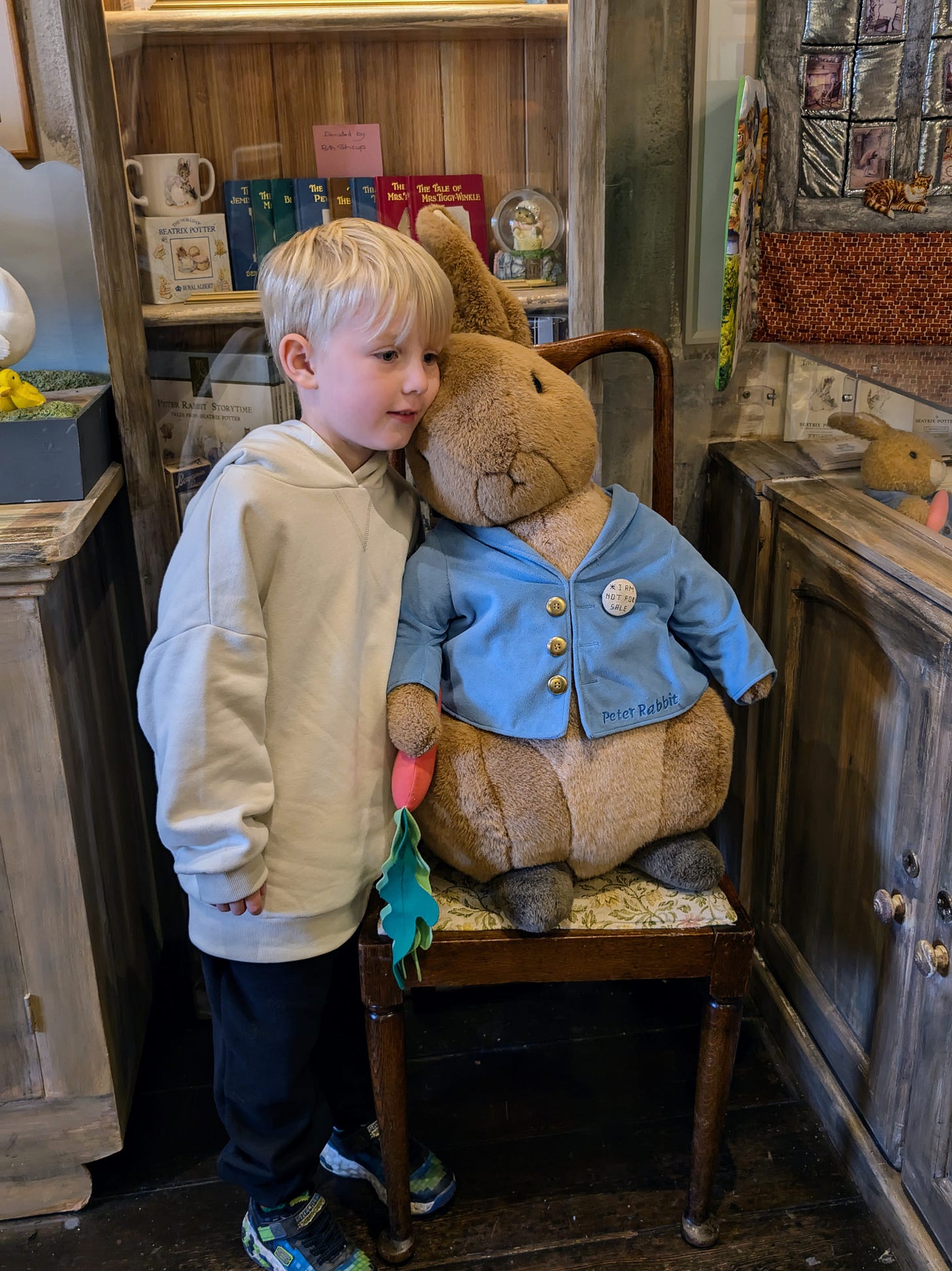
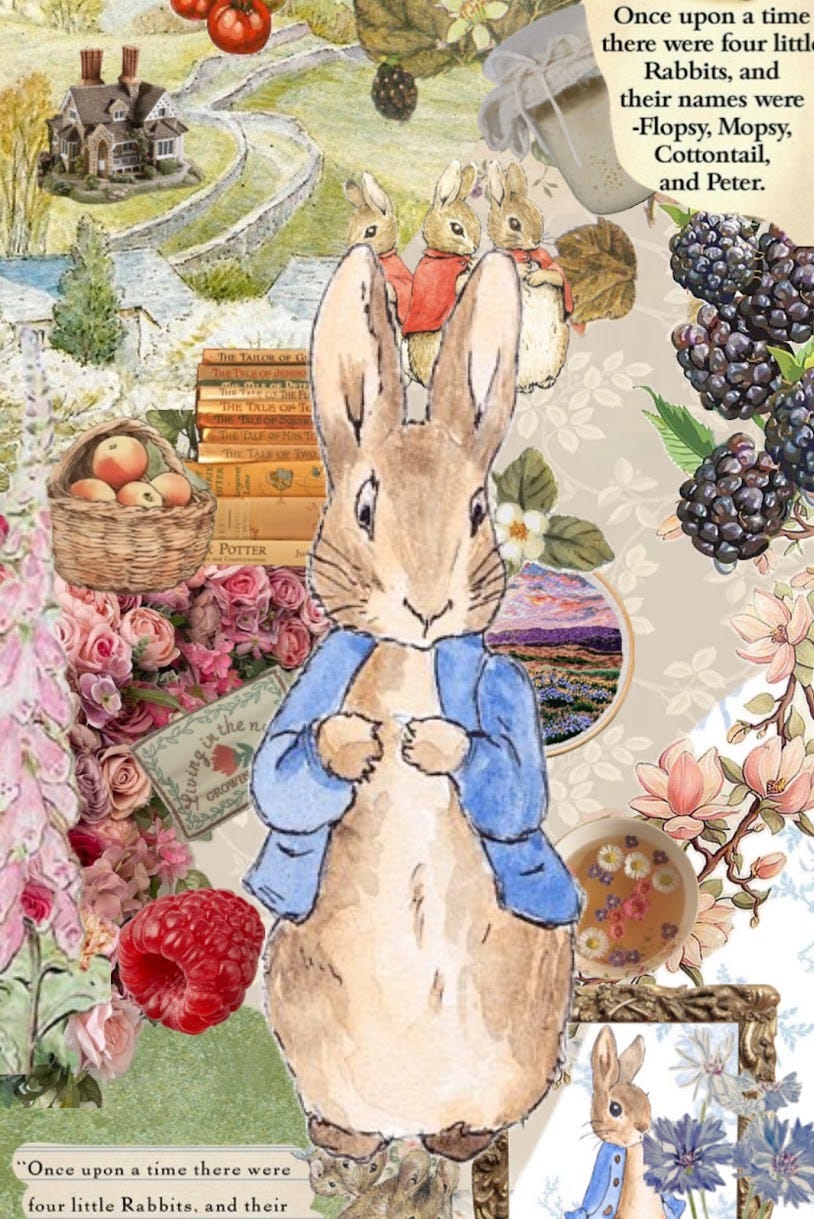
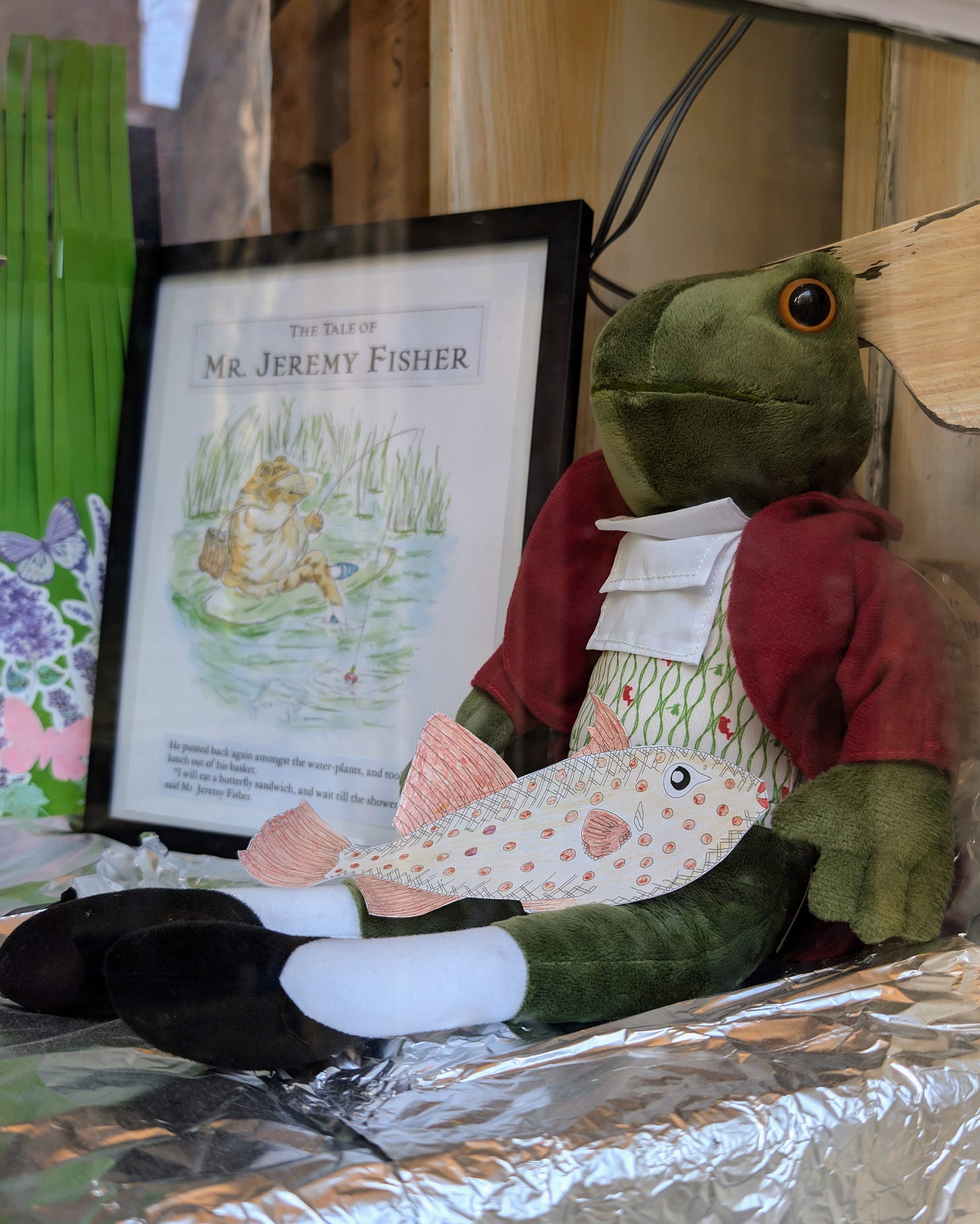
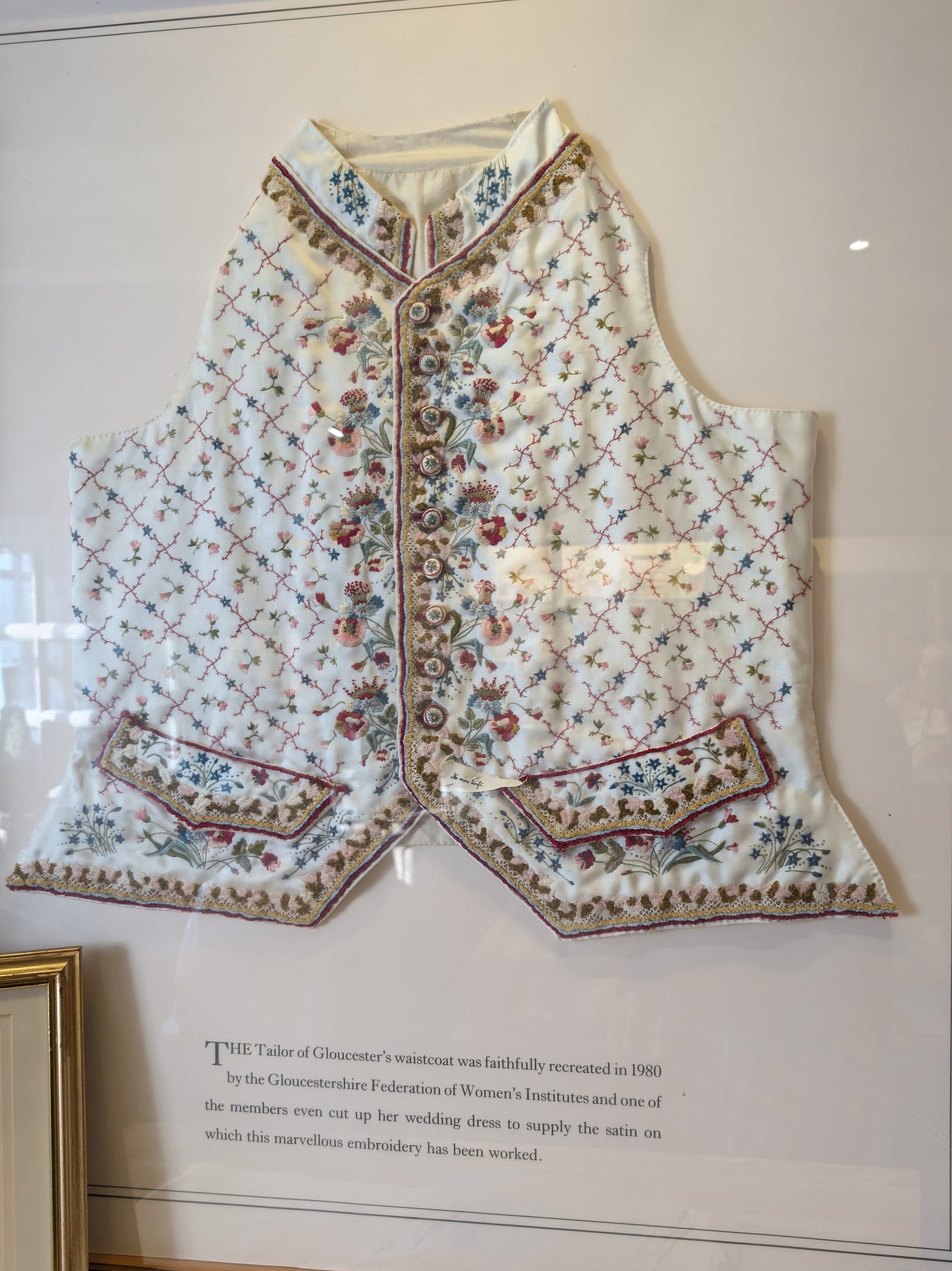
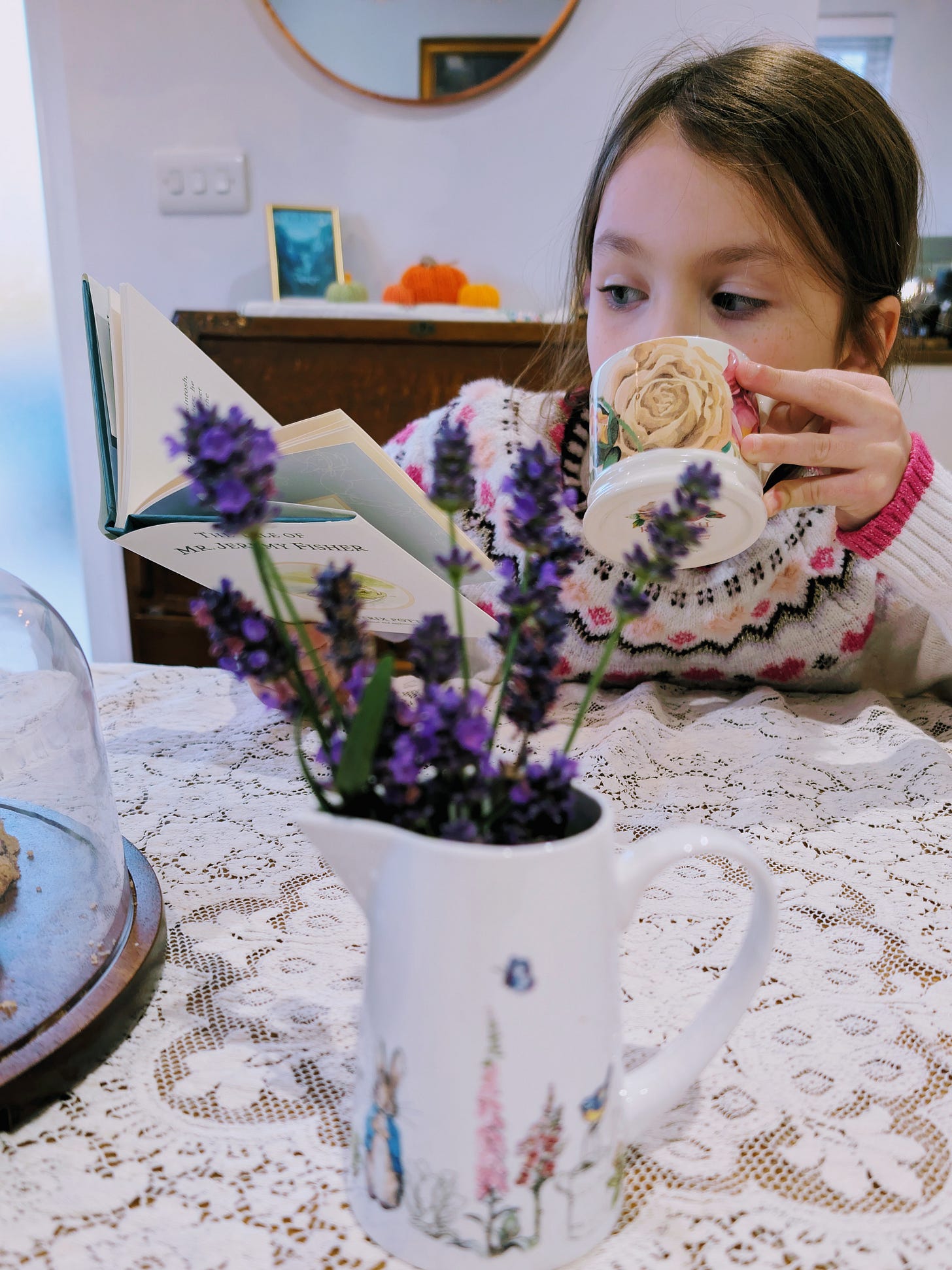
I'm a huge fan of Beatrix Potter and dream of visiting rural English countryside. Love her books and paintings. Mrs Tittlemouse is my top pick:)
Marci ...Alberta Canada